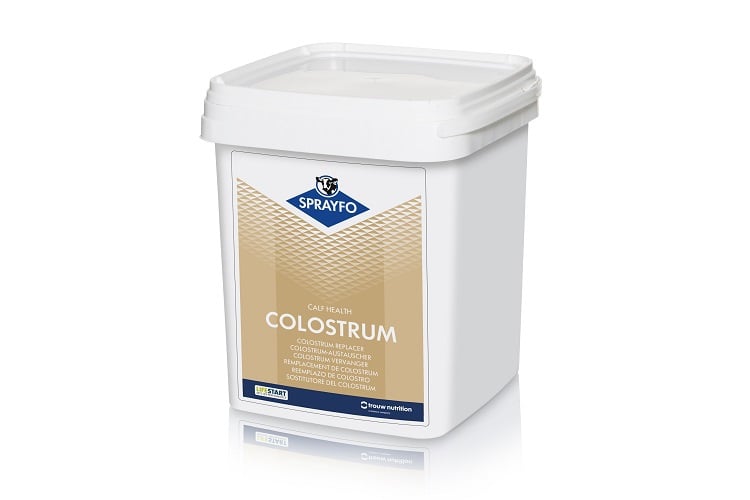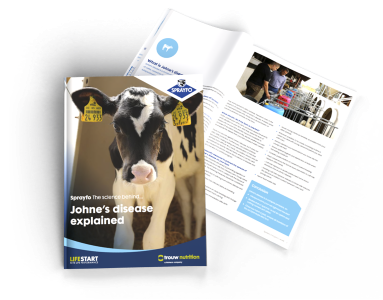
Sprayfo Colostrum
- Product
La enfermedad de Johne es una enfermedad de desgaste crónico del ganado, causada por Mycobacterium avium, subespecie paratuberculosis (MAP). Si la enfermedad de Johne está presente en una granja lechera, potencialmente crea los siguientes problemas:
Los terneros lecheros generalmente se infectan con Mycobacterium paratuberculosis durante las primeras semanas de sus vidas a través del contacto directo o indirecto con heces de vacas infectadas o a través de la leche de vacas con enfermedad de Johne.
Los signos clínicos de la enfermedad de Johne generalmente aparecen a partir de los 3-5 años de edad. Las vacas que sufren de la enfermedad de Johne tienen diarrea crónica, pérdida de peso, baja producción y baja fertilidad.
Los animales infectados con Mycobacterium paratuberculosis se pueden identificar mediante análisis de sangre, leche o heces. Ninguna de esas pruebas es muy confiable durante las primeras etapas de la enfermedad. Por cada vaca con signos clínicos hay 15-20 vacas aparentemente sanas que ya eliminan la bacteria de la enfermedad de Johne.
La enfermedad de Johne se puede introducir en su granja agregando una vaca con la enfermedad de Johne al rebaño (para evitar esto, mantenga la granja cerrada y nunca introduzca un animal de otra granja) o mediante la transferencia de heces infectadas con Mycobacterium paratuberculosis de una granja infectada. Los visitantes frecuentes de múltiples granjas (asesores de alimentos, inseminadores, veterinarios, etc.) pueden potencialmente transportar heces infectadas de una granja a otra. La estricta higiene y bioseguridad son la respuesta a esta amenaza.
Una vez que la infección se introduce en una granja, pueden pasar varios años antes de que el primer animal infectado muestre signos clínicos. En este momento, la infección puede haberse propagado a otros animales. Por lo tanto, incluso en ausencia de casos clínicos de la enfermedad de Johne, ¡las medidas de bioseguridad para evitar la transferencia de bacterias entre animales en la granja tienen sentido!

Eradicating Johne’s disease or keeping Johne's disease under control can be a huge challenge. Our Technical bulletin "Johne's disease explained" can help you understand the background of the disease and the rationale behind certain preventative measures. Hygiene around calving to reduce transfer of Mycobacterium avium, subspecies paratuberculosis (MAP) is an important part of a Johne's disease control programme. The white paper with the optimal calving protocol for dairy cows will help you to optimise your calving process.
You can access all of our documentation such as the science behind Sprayfo and LifeStart research documents, Sprayfo technical bulletins about various calf diseases and technical product data sheets or feeding schedules.
 Young dairy calves should not be in contact with contaminated faeces or milk from cows infected with Johne's disease, therefore:
Young dairy calves should not be in contact with contaminated faeces or milk from cows infected with Johne's disease, therefore: Seperate the young calves from the cows
Seperate the young calves from the cows Vaccination against Johne's disease
Vaccination against Johne's disease Advice for colostrum and milk feeding
Advice for colostrum and milk feeding Johne’s disease is a complex problem. Therefore:
Johne’s disease is a complex problem. Therefore: